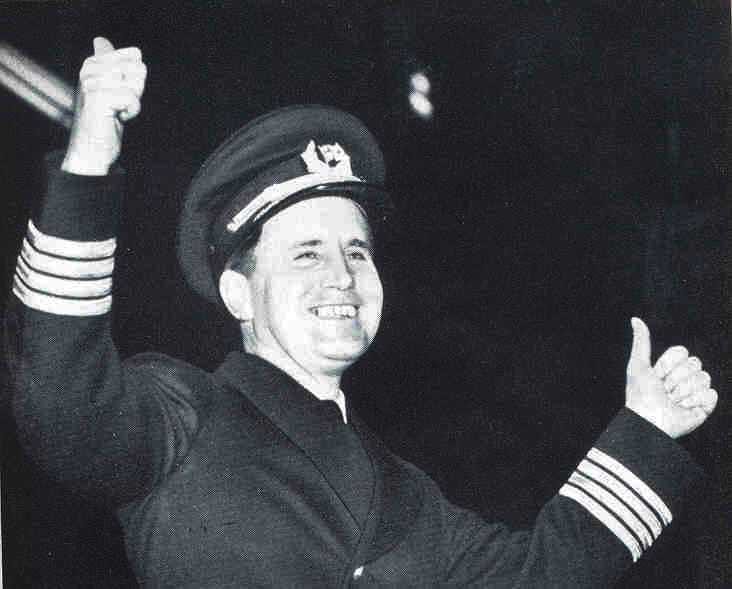The Endgame
Newsletter #12 - Captain Kurt Karlsen
This newsletter looks at issues and events from the point of view of the endgame. The endgame is a chess concept. In the endgame only a handful of pieces are left on the board. Few moves remain. Victory or defeat is close. Player options are limited and diminishing. Zugzwang is a particularly important aspect of the endgame. It is zugzwang when a player’s only available moves will worsen his position.
Toronto, February 19, 2023
Captain Kurt Karlsen
Sometimes you have to abandon ship. But how do you know when the time has come?
When I was a young boy Kurt Karlsen was my hero. Karlsen was captain of Flying Enterprise, a 6,700 ton general-cargo freighter. At the end of December 1951, on a voyage from Hamburg to New York, Flying Enterprise ran into a huge storm as she approached the English Channel. On December 27 she was hit by a rogue wave, suffered severe structural damage, and started listing badly to port. On December 29, on Karlsen’s orders, forty crew and ten passengers (Germans and Poles emigrating to the US) jumped into the sea and were picked up by ships that were standing by. One passenger drowned.
Captain Karlsen did not abandon Flying Enterprise. He was determined to get his ship towed to an English port to stop salvage vessels from claiming her. He stayed on board in horrible and dangerous conditions. On January 3 the British tug Turmoil arrived to assist the stricken steamer. Turmoil’s mate, Kenneth Dancy, joined Karlsen on board his ship to help secure a tow line. To get to Flying Enterprise, in very high seas, not wearing a lifejacket, Dancy leapt from the Turmoil’s deck to the ship’s stern. In the lore of the sea this spectacular jump is known as “Dancy's Leap.”
Over days the weather continued to deteriorate. Flying Enterprise’s list increased to 90 degrees. She was lying on her side. By January 10 it became clear the ship would soon go under. To save their lives Karlsen and Dancy jumped from the ship’s now-horizontal smokestack into the roiling sea. They were picked up by Turmoil. Forty minutes later, from the deck of Turmoil, they watched the Flying Enterprise sink. Surrounding ships sounded long blasts on their whistles as the Flying Enterprise went down. (For dramatic footage of the sinking, see here.)
By now Captain Karlsen and Kenneth Dancy were world famous. Their rescue and the fate of Flying Enterprise were reported on the front page of The New York Times. When they arrived on board Turmoil at the port of Falmouth in England they were received as heroes. Later a ticker-tape parade was held in New York to honour Karlsen. He was offered large sums by newspapers and movie studios for the rights to his story. He refused all offers and returned to sea. He said, "I don't want a seaman's honest attempt to save his ship used for any commercial purpose."
Contrary to some romantic ideas, neither law nor tradition obliges a captain to go down with his ship. (He might choose to do so, like Captain Edward Smith of Titanic). International law and the law of many maritime countries do require that a captain do whatever is possible to protect and save his passengers and crew. Maritime tradition stipulates that the captain of a foundering ship be the last to leave. Karlsen was careful to ensure that Dancy was first to jump off the smokestack of Flying Enterprise.
Captain Karlsen’s endgame choices were impeccable. He helped save the lives of his crew and passengers. He did what he could to protect the interests of the Flying Enterprise’s owners. He was last to leave his ship. He scrupulously observed both law and tradition.
And he displayed astonishing bravery and sangfroid. Karlsen could have abandoned Flying Enterprise on December 29. But he didn’t. He stayed until January 10. By then, all hope of saving his ship was gone. No choices were left.
Kurt Karlsen 1914 - 1989
P.S. My new book is Antisemitism: An ancient hatred in the age of identity politics. It will be published on March 7 in Canada and on April 4 in the United States and the United Kingdom. You can pre-order from the publisher, Sutherland House, or from Ben McNally Books. Visit my website.




Great story!
...as the film clip recounts, while his ship was listing at 80 degrees, Capt Karlsen was able to eat and sleep, no need for a fitbit sleep tracker!! might call that sang froid!